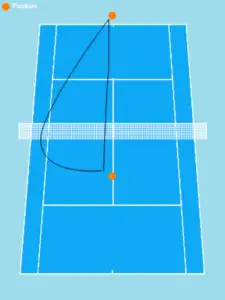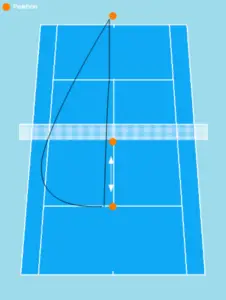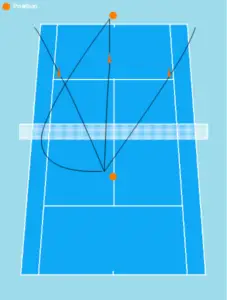Tennis smash exercises
The best 7 tennis smash ball exercises for beginners
The best 7 tennis smash ball exercises for beginners
You put the opponent under pressure with a placed attacking ball and advance to the net. If the opponent just reaches the tennis ball, it is usually returned as a high ball and you have the chance to win the point with a smash.
For tennis beginners this sounds easier than it really is, because the smash has to be played with the right smash ball technique. But don’t worry with a little practice you should be able to look forward to your next smash soon.
At the same time, a good smash will raise your doubles game to a higher level, because in doubles you play on average significantly more smash balls than in singles due to the frequent position at the net.
As always, the warm-up program should be completed first. After that you can dedicate yourself as a tennis beginner to the best 7 smash exercises. Especially in the beginning it is important that a coach or an advanced tennis player can pass you the tennis ball for a smash.
It is recommended to do the smash exercises in the mentioned order. If you are unsure, go back one exercise – step by step you will reach the successful smash.
1. Smash as „serve“
The smash ball in tennis is very similar to the serve in terms of its technique. The difference is that the smash is played out of the court – often at the net – and not just into the opponent’s T-court like the serve.
To get used to the new angle of impact, simply stand in the T-field and try to hit a normal serve from there into the opponent’s field.
The aim of the exercise is to get a feeling for the wrist action, the power to be used and the direction. After 10 flawless smash balls you can move on to the next exercise.
2. Smash from a standing position
The tennis ball comes flying at you from the opponent’s half, so one person should go to the other side of the net and throw the tennis ball at you in a high arc.
Your task is to target the tennis ball flying towards you with your non-hitting hand and practice the backswing, motion and swing. Stand approximately in the middle of the net and T-line to practice simple smash balls from a standing position.
The goal of the exercise is to get used to the tennis ball flying towards you and not to make any mistakes when hitting the smash from a standing position. As always, alternate between throwing and hitting.
3. Bouncing smash
This time you stand on the T-line with the tennis racket and your opponent plays the tennis ball with the tennis racket in a high arc as vertically as possible into the middle of your T-field.
You bounce the tennis ball once and stand exactly under the ball and execute a normal smash. By bouncing, you gain time and can stand perfectly under the ball.
The aim of the exercise is to anticipate the bounce of high balls and to hit the comparatively easier smash safely into the opponent’s court. After a few balls, you alternate between passing and smashing.
4. Direct smash on feeding
To improve on the previous exercise, the pass is hit directly from the air with the tennis racket, if possible from the opponent’s baseline, i.e. without bouncing.
If you work with a tennis coach, you will probably hit many tennis balls from a standing position. Otherwise you will have to stand slightly sideways exactly under the ball.
The goal is to hit as many smash balls into the court as possible and to get routine in the smash: from the backswing to the movement to the outswing.

5. Smash in the stretching
After you have mastered the smash technique and you have significantly increased your confidence with the smash, you go to the net with the tennis racket. Now the tennis ball is passed again – if possible from the opponent’s baseline – and you move sideways to the back and stretch to the smash.
It is important that you do not run backwards but sideways. If the tennis ball has been hit too far back, try to jump sideways backwards to extend your reach.
After the shot you run back to the net – after a short touch with the tennis racket you hit the next tennis ball. This way you train your stamina at the same time.
After 6-10 smash balls you should switch between passing and smashing.

6. Smash placement
After the smash balls have been hit safely into the opponent’s field both from a standing position and while moving, it’s time to consciously place your smash.
For this purpose, the tennis ball is hit in the middle and you alternately hit from your perspective to the left, center and right. After every 6-9 smash balls, you alternate between passing and smashing.
The aim of the exercise is to make your smash ball more variable and unpredictable for your opponent.

7. Smash to win the point
The goal of the exercise is not only to hit a clean smash, but also to observe the opponent’s movement and to hit the ball into the field in the opposite direction.
The overall rule for the smash is that safety comes before speed. Your opponent is already on the defensive and your smash does not necessarily have to be a direct winning stroke. Most of the time a safely played but placed smash is enough. Play it accordingly clever, because under pressure, especially tennis beginners tend to make many mistakes.

